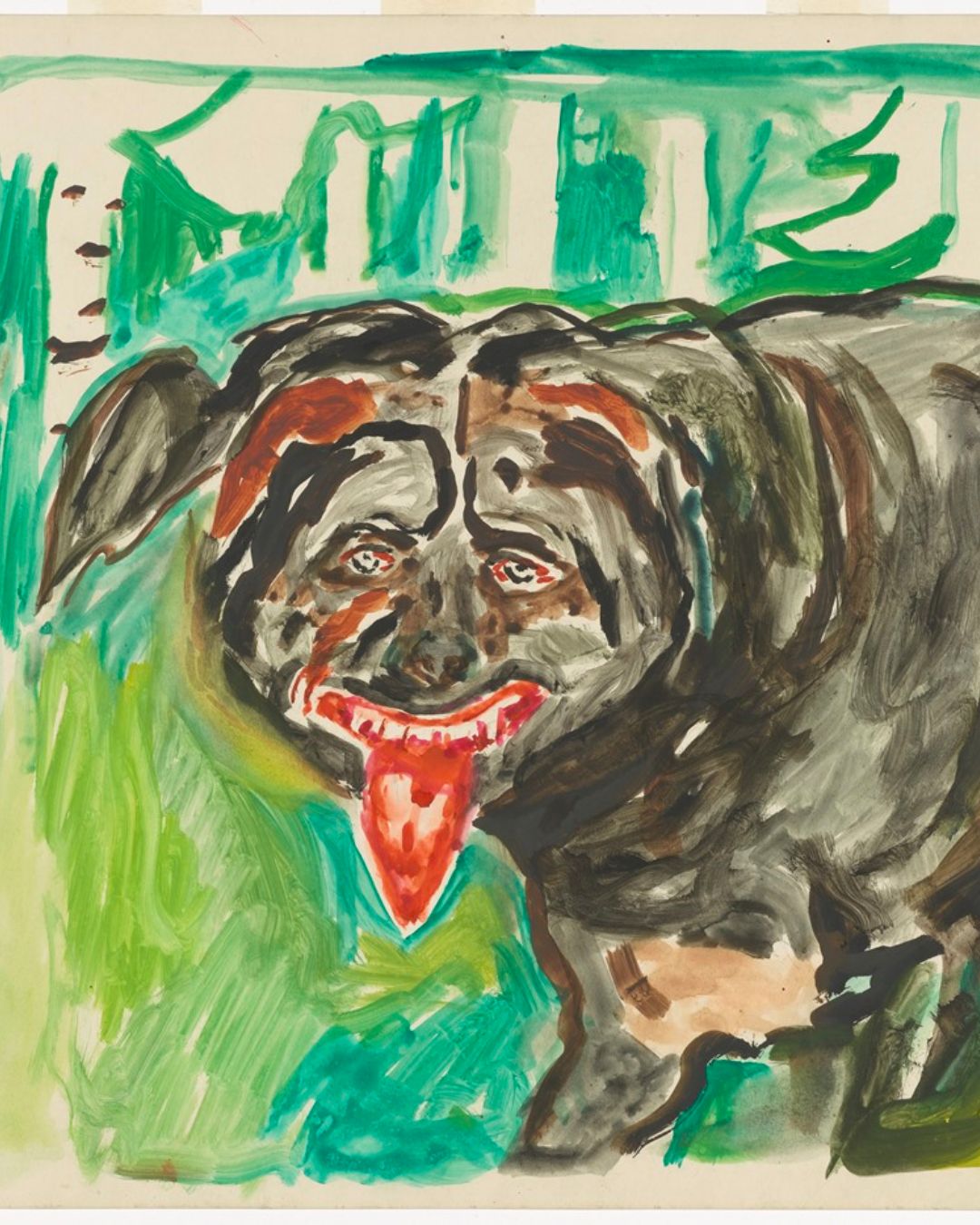In the bustling markets of India in 1995, artist Bharti Kher’s encounter with a serpent-shaped bindi marked the inception of a transformative journey that would shape her artistic language for years to come. This unassuming adornment, traditionally a symbol of marriage and cultural identity, became not just a material but a powerful motif central to Kher’s exploration of identity, tradition, and globalisation.

Bharti Kher. ‘Formless Connections’. Bindis on Painted Board. 2016. BhartiKher.Com
What’s a Bindi, Anyway?
The bindi, derived from the Sanskrit word ‘bindu,’ meaning dot or point, has traditionally been associated with the Hindu symbol of the third eye and worn as a mark of marriage. As Eastern and Western cultures intermingled, the bindi underwent a transformation. The red bindi found its place not just between the eyebrows of married women but also as a fashion accessory embraced by unmarried girls and women of various religions. Kher keenly observed the ritual of women transferring their bindis to the bathroom mirror at the end of each day—a poignant act symbolising the bindi’s role as a woman’s third eye throughout the day, resting on the mirror for safekeeping at night.

Bharti Kher. ‘Dark Matter MM’. Bindis on Painted Board. 2015. BhartiKher.Com
Bharti’s Bindi
For Bharti Kher, the bindi became more than a decorative item; it became a central theme in her artistic practice. Her menagerie of resin-cast animals and expansive wall-based panels are transformed by the meticulous application of bindis. The bindi, once a mass-produced diminutive object, transcends its origins, becoming a powerful symbol that weaves together disparate ideas, creating visual richness and allowing for a multiplicity of meanings.

Bharti Kher. ‘The skin speaks a language not its own’. Bindis on Life-size Fibreglass Elephant. 2006. BhartiKher.Com
Bindis Beyond the Ordinary
Kher’s use of the bindi transforms surfaces into sensual abstract compositions—swirls of contrasting colored dots and shapes. Beyond its aesthetic allure, the bindi in Kher’s hands becomes a stylistic and symbolic device, connecting historical and contemporary contexts. It speaks to the artist’s interest in kitsch, popular consumer culture, and her ability to infuse mass-produced elements with meaning.

Bharti Kher. ‘An absence of assignable cause’. Bindis, Fibreglass. 2007. BhartiKher.Com
More than Just Dots
In reflecting on her use of bindis, Bharti Kher notes the evolution of her approach. What began as an investigation into the readymade became an integral part of her practice. Her bindi-covered sculptures and paintings evoke art historical references while addressing contemporary themes of identity and the fluidity of cultural symbols.

Bharti Kher. ‘Sweet Violet’s Deathly Kiss’. Bindis on Painted Board. 2009. BhartiKher.Com
From a chance encounter in an Indian market to becoming a defining element of her artistic language, the bindi for Kher is not merely a dot but a tool to explore culture. In every bindi-adorned creation, Kher invites us to contemplate the layers of meaning embedded in this seemingly simple ornament—Bindis might be small, but in her hands, they turn into keys unlocking a world of colours, dots, and art!
So, next time you see a bindi, don’t just see a dot.






